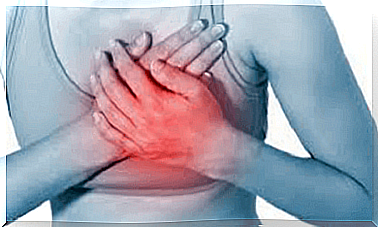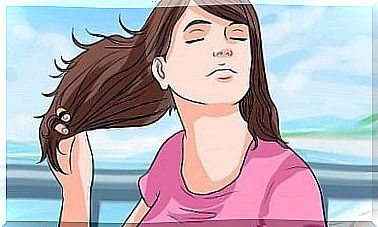What Is Dyslexia? The Symptoms And Treatment

Dyslexia is classified as a reading disorder. It is characterized by problems with precision and fluency in word recognition, which makes the children who suffer from it have difficulty spelling words.
In other words, people with dyslexia have trouble reading and pronouncing words they see written.
This condition is usually accompanied by difficulties in writing and difficulties with mathematical reasoning.
It is important to emphasize that people with dyslexia have normal intellectual development. The problems with reading and writing are not due to intellectual issues.
Who Affects Dyslexia?

Dyslexia is a disease that in most cases is diagnosed in childhood. Although easily diagnosed in children, it is a condition that persists throughout adulthood and can cause serious problems.
Data shows that dyslexia affects between 5 and 10 percent of the population. In practical terms, this means that in a primary school class of 25 children, at least one of them will be dyslexic.
How does dyslexia affect people’s lives?
The first problems arise during the early years of education. Difficulty learning to read is a major obstacle for these children. This does not only occur on an academic level, but it can also affect their personal development. Often it also affects their self-esteem.
In many cases , these difficulties lead to a disinterest in reading. The consequences of this are:
- Insufficient or poor vocabulary.
- Problems with reading comprehension.
- Difficulty understanding, inferring, and coming to conclusions about difficult texts.
In the vast majority of cases, people with dyslexia are aware of their limitations. This explains why so many of these people suffer from low self-esteem, anxiety and even depression.
Why does dyslexia arise?
To answer this question, we need to describe the answers step by step.
1. How do we read and write words?
When it comes to explaining how we read and write, the most widely accepted hypothesis is the dual-route model. According to this model, we can write a word through:
- Retrieving from memory, in case we already know the word. This is called the ‘lexical route’, which is based on the lexical spelling store. That means we store information in our memory based on how we see the word written. For example, we learn to write the word ‘bathroom’. The next time we want to write it, we’ll get it from our memory, from our ‘store of words’.
- The other option is to convert the phonemes that make up the word into graphemes. In other words, converting the sounds into the corresponding graphical representation. This is the way used when writing new words. In the early years of childhood, we acquire the knowledge to make this conversion from phonemes to graphemes. We learn that the letter ‘B’ corresponds to one sound and that the letter ‘S’ corresponds to another sound. So we can write words that we have never heard before. It’s very simple: we learn the sounds that make up the words and we just imagine them. This theory is based on the latest findings of brain imaging testing, as the existence of an anatomical basis has already been demonstrated.
2. And what happens in the brain?
In general, this means that the connections between the areas of the brain that deal with language are weakened.
3. What are the areas of the brain associated with language?
First, there is the center of Broca. It is found in the frontal lobe in the dominant cerebral hemisphere. For the majority of the population, that means the left. However, it is right for a percentage of left-handed people.
In general , this part of the brain is responsible for the articulation of words, nomination and silent reading.
Second, there is Wernicke’s area. This lies between the temporal lobe and the parietal of the dominant cerebral hemisphere. The main functions are related to the recognition of spoken words. This is also the area where the sequences that make up words are stored.
Finally, there is an area associated with the parietal and occipital lobes, whose function is to form words.
What types of dyslexia are there?
- Phonological dyslexia. People with this type of dyslexia use the visual way. This means that they read the words ‘visual’. This way they can easily read words they already know, but it is impossible to read words they don’t know.
- Superficial (visual) dyslexia. People with this type of dyslexia use the phonological way. They read words syllable by syllable. Because of this, they have a hard time when it comes to words whose pronunciation is different from how it looks when written.
- Deep or mixed dyslexia. This is the most severe case of dyslexia, affecting both ways. As a result, there are significant word reading problems, multiple orthographic errors, and even confusion when it comes to the meanings of different words.
Therapy

Treatment for dyslexia is very important to reduce the chance of more problems in the long term, both academically and emotionally. Rehabilitation treatments have been shown to have a huge effect on children.
Treatment generally includes:
- Support from specialized teachers.
- Treatment with speech therapists.
- Controlled education in study techniques.
- Records/exercises to reinforce what has been learned in the classroom.
Family support also plays an important role in the treatment of dyslexia. It’s not just about motivating these kids to make progress in their academic and personal lives.
In addition, it is about emphasizing academic strengthening activities. That will ensure that their study techniques greatly improve, especially when it comes to writing and reading.
It is also important to let children participate in activities that enhance their self-esteem and improve their mood, such as sports, extracurricular activities and so on. If the child has serious problems with anxiety or depression, you should seek medical attention.









